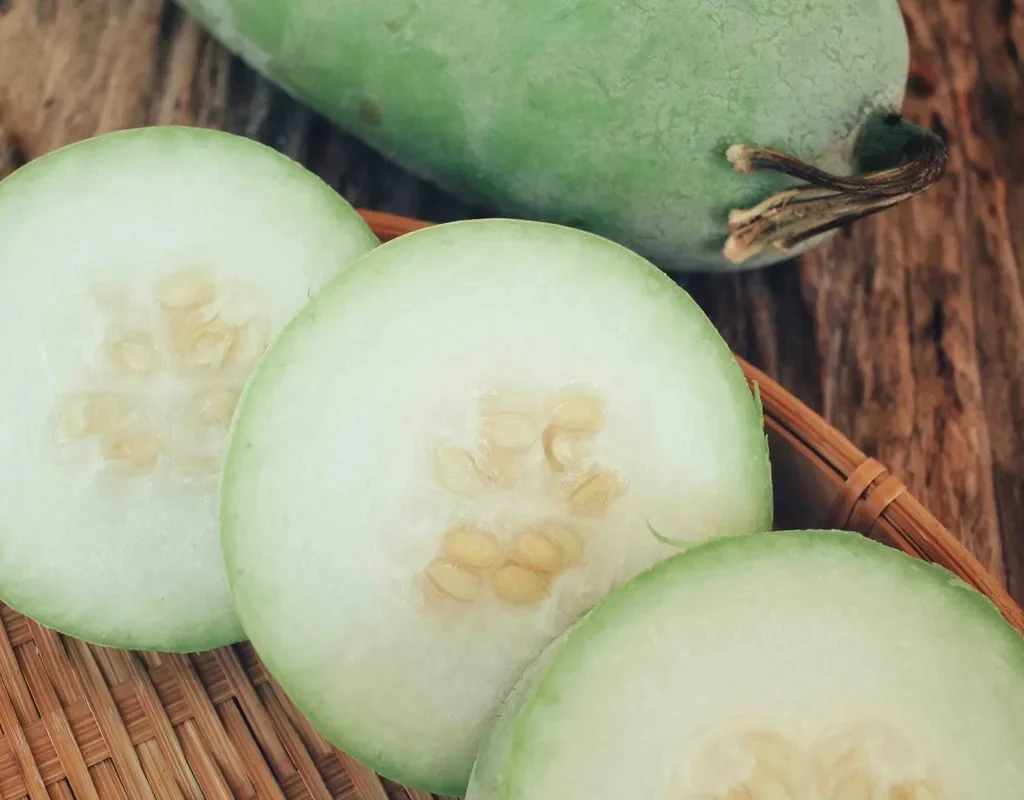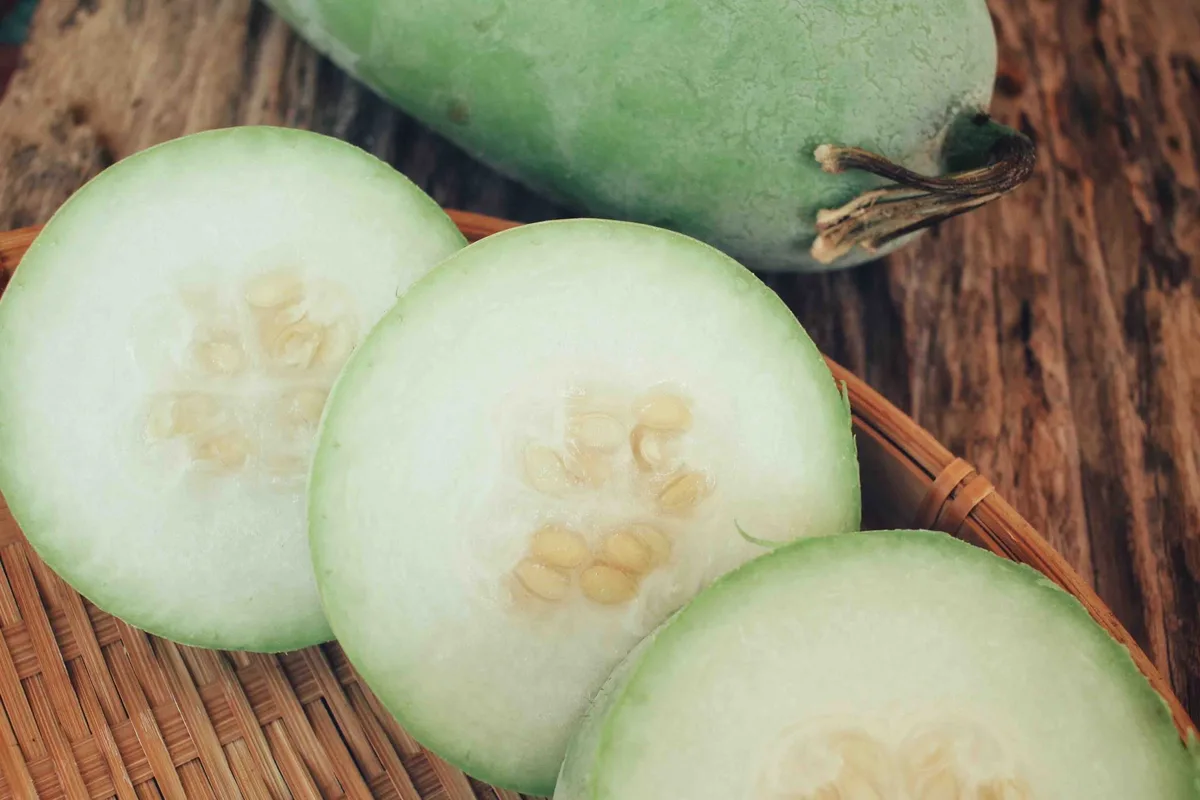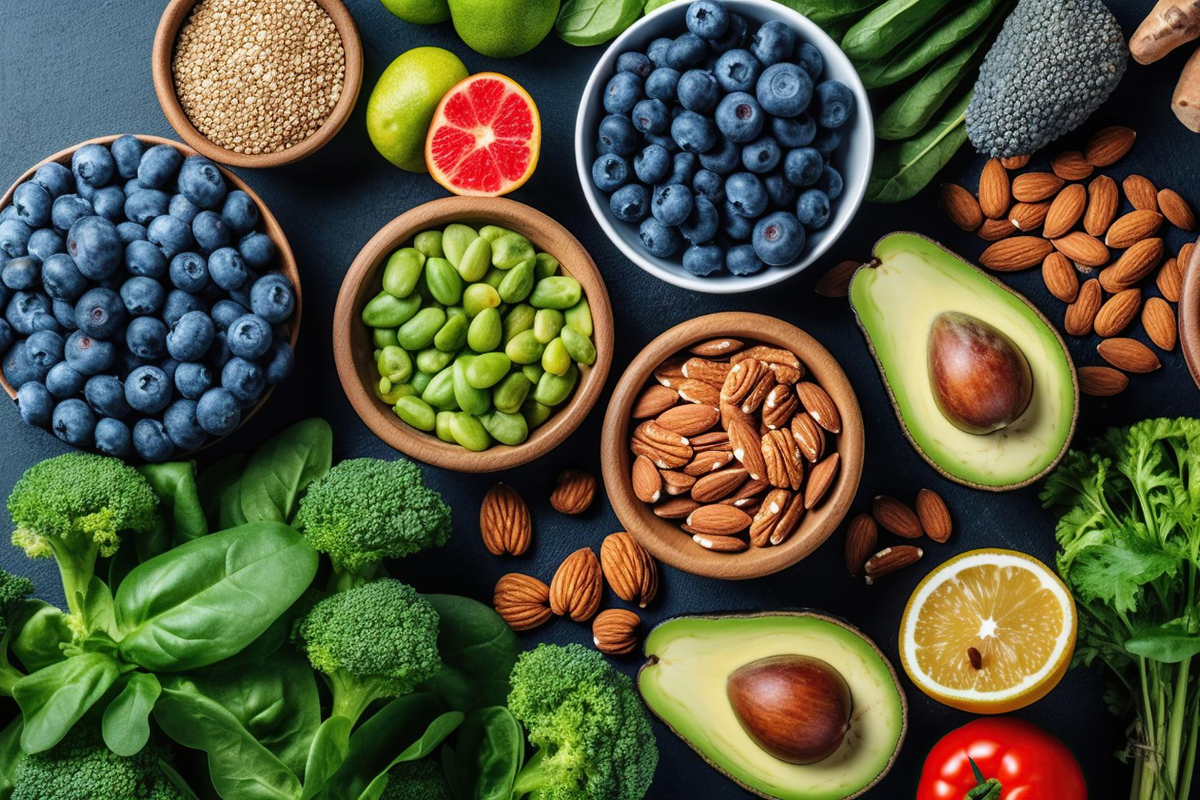In the sweltering summer markets of Southern Asia, amidst vibrant mangoes and glistening jackfruits, lies a humble giant – the winter melon. Often overlooked for its unassuming appearance, this ancient fruit holds a treasure trove of health benefits and culinary delights waiting to be discovered.

Don’t let its deceptive name fool you! Winter melon thrives in the sun, its large and oblong green body cradling a juicy, translucent flesh. While technically a fruit, its subtle, grassy flavor and surprisingly meaty texture have earned it a prominent place on dinner tables, not dessert bowls. But beyond its culinary versatility, winter melon boasts a nutritional profile that rivals the flashiest superfoods.
Dive into Nutritional Wealth
Delving into the nutritional composition of winter melon, it reveals a nutrient-dense profile. In 100 grams of winter melon, you’ll find:
| Water | 96.1 g |
| Energy | 13 kcal |
| Protein | 0.4 g |
| Carbohydrates | 3 g |
| Fiber | 2.9 g |
| Calcium | 19 mg |
| Vitamin C | 13 mg |
| Vitamin B2 | 1.3 mg |
| Magnesium | 10 mg |
This nutrient-rich composition sets the stage for the numerous health benefits associated with winter melon consumption.
A Nutritional Masterclass:
Imagine a fruit 96% water, yet brimming with essential vitamins and minerals. Each bite of winter melon offers a refreshing sip of hydration and a generous helping of fiber to keep you feeling full and satisfied. But that’s not all! This humble gourd packs a punch of:
- Antioxidants: These warriors defend your cells against free radicals, potentially lowering your risk of chronic diseases like cancer and heart disease.
- Vitamin C: Remember scurvy? Thankfully, winter melon has enough vitamin C to keep your immune system strong and your skin glowing.
- Potassium: This electrolyte keeps your muscles and nerves happy, and even helps regulate blood pressure.
- Magnesium: This essential mineral plays a vital role in bone health, sleep quality, and mood regulation.
A Feast for the Senses:
Forget bland and boring! Winter melon is a culinary chameleon, adapting to a spectrum of flavors and textures. Its gentle sweetness complements savory curries and stir-fries, while its refreshing lightness shines in salads and soups. In China, it’s the heart of “wife cake,” a delicate pastry with a sweet and savory soul. And if you’re feeling adventurous, try your hand at “lou po beng,” a traditional dessert where winter melon takes center stage in a symphony of coconut milk and sugar.
Beyond the Plate:
For centuries, winter melon has been revered in Traditional Chinese Medicine for its healing properties. It’s believed to help with digestion, reduce inflammation, and even alleviate headaches. While scientific research is still catching up, many swear by its natural remedies.
A Word of Caution:
Like any good thing, moderation is key. Winter melon’s cold nature might exacerbate symptoms in some individuals, so enjoy it in smaller portions during cold weather. And remember, its diuretic properties might have you making more frequent trips to the bathroom.
Embrace the Magic:
From humble beginnings to culinary stardom, winter melon’s journey is a testament to its hidden potential. So, next time you see this unassuming fruit in the market, give it a chance. Its refreshing taste, nutrient-rich heart, and countless culinary possibilities might just surprise you. Embrace the magic of the winter melon, and embark on a journey of health, flavor, and ancient wisdom, one delicious bite at a time.
Savoring the Flavor: Culinary Tips and Recipes
Winter melon’s mild and nutty taste makes it a versatile ingredient for various dishes. Whether in soups, stews, stir-fries, or desserts, its flavor absorbs well, creating delightful culinary experiences. Traditional Chinese desserts like ‘wife-cake’ or ‘lou po beng’ feature winter melon as a key ingredient.
Selection and Storage: Choose a fresh winter melon with firm green rinds, devoid of bruises. For storage, cut the melon, remove the seeds’ white part, and store it in a vegetable container in the refrigerator for up to four days.
Tempting Your Taste Buds: Delectable Winter Melon Recipes
- Chinese Winter Melon Soup:
- Ingredients: Winter melon, shiitake mushrooms, chicken broth, ginger, diced cooked ham, salt, pepper, green onion.
- Method: Boil melon, add mushrooms, ham, and seasonings. Simmer and serve hot.
- Ash Gourd Curry:
- Ingredients: Winter melon, onion, green chili, mustard seeds, cumin seeds, turmeric, curry leaves, grated coconut, coconut powder.
- Method: Sauté ingredients, steam melon, add coconut, and mix well.
- Winter Melon Tea:
- Ingredients: Winter melon, brown sugar, water, ice cubes.
- Method: Peel, mix with sugar, boil, strain, and mix with water to make tea. Serve cold.
In Conclusion: Moderation is the Key
In conclusion, winter melon stands as an ancient fruit with modern-day health benefits. Integrating it into your diet can contribute to diabetes management, cancer risk reduction, and overall well-being. However, moderation is advised to avoid potential side effects. Whether enjoyed in soups, salads, or smoothies, the mild and nutty taste of winter melon adds a delightful touch to diverse culinary creations. So, embark on a journey of health and flavor by embracing winter melon as a valuable addition to your diet.









